So, are you looking for a sweet, compact little plant? Well, don’t fiddle around! The Little Fiddle might be just what you’re looking for! This dwarf variety has smaller, more compact foliage compared to its cousin the Fiddle Leaf Fig.
This plant will grow in an upright state and this variety will continue to grow tall and not short, as its common name seems to indicate.
The question is often asked if the Ficus Lyrata Bambino or the dwarf fiddle leaf fig are the same plant. Well, yes, they are! They can go by either name, but are actually the very same plant.
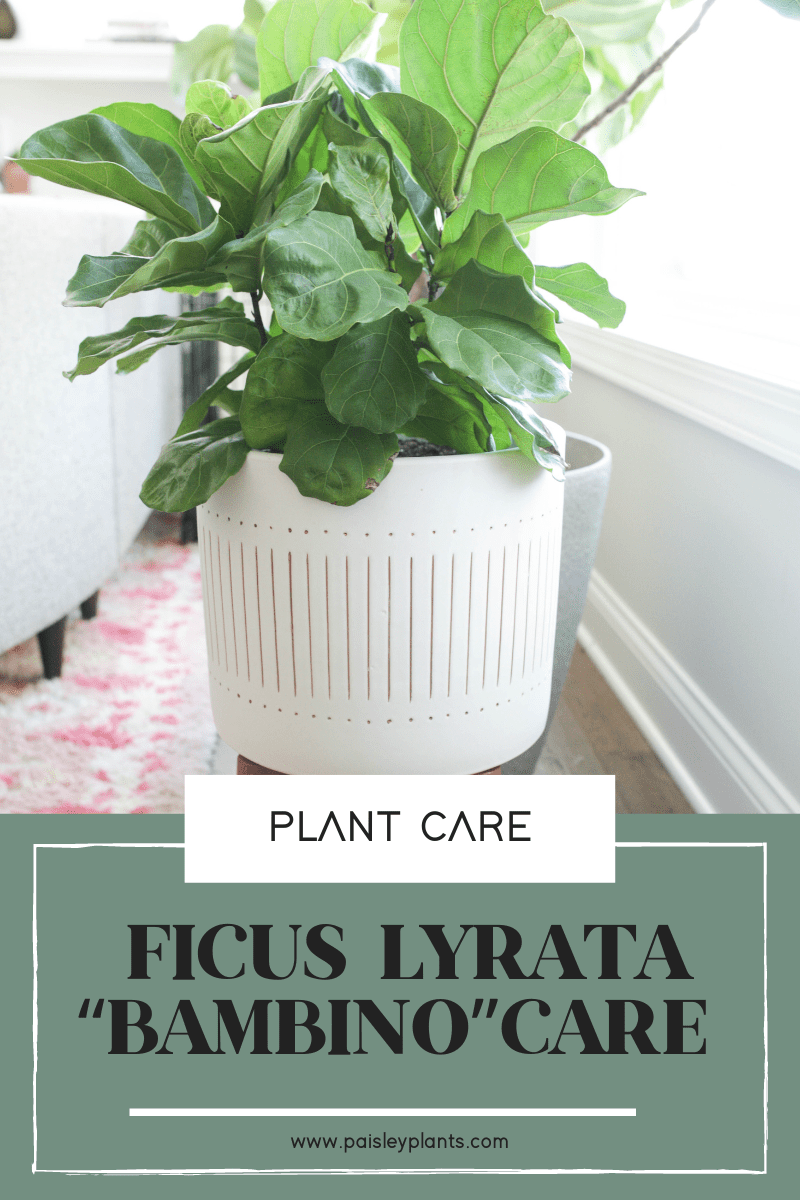
This post includes affiliate links.
They are also sometimes mixed in with younger regular fiddle leaf figs in a store or greenhouse, but are not labeled as a dwarf or bambino. These plants aren’t just a smaller plant, their leaves are also different!
The easiest way to tell them apart from a regular fiddle fig is to look at their leaves.
Regular fiddle leaf figs have large, slightly elongated leaves which are shaped like fiddles! The Bambino or dwarf leaves tend to be thicker, smaller and more rounded.
*Find other large leaf plants here!
The leaves on these plants also tend to stick straight up, so that is another indicator of the difference from the regular fiddle figs.
The bambino or dwarf plants also tend to be bushier than the regular fiddle fig plants. It is possible that you may find a plant that is not labeled, but this is not a big deal. Just find a good one, take it home, and watch it grow!
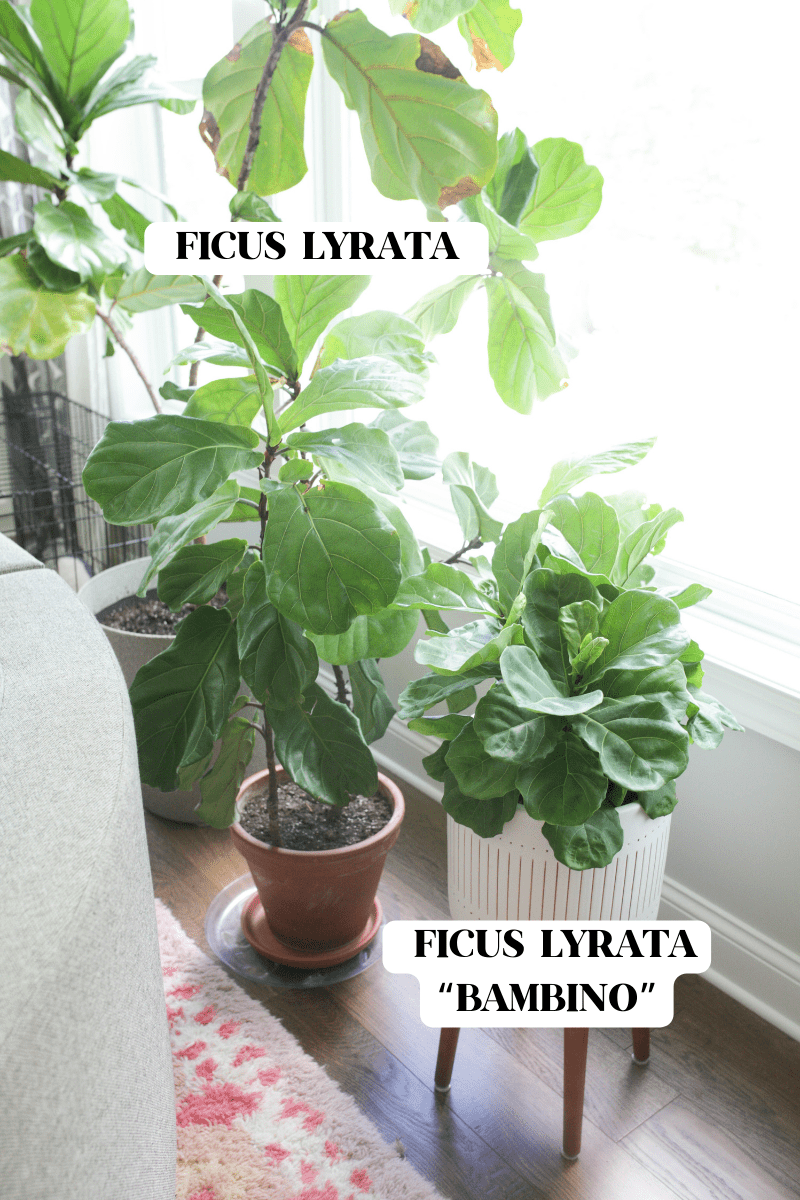
Table of Contents
Background/History
These Little Fiddle (ficus lyrata “Bambino”) figs are native to West Africa and grow in the lowland tropical rainforest.
Toxicity
The Little Fiddle is considered poisonous due to the latex in the sap and should be kept away from children and animals. It also contains allergens that could result in asthma symptoms, so take care to avoid this, if necessary.
You should also avoid this plant if you have a latex allergy. When you cut the stems of this plant, sticky latex will ooze out! This can be an irritant to your skin, so be sure to wash your hands immediately, or you could wear gloves in the first place to avoid contact with your skin.
Care Tips for Ficus Lyrata “Bambino”
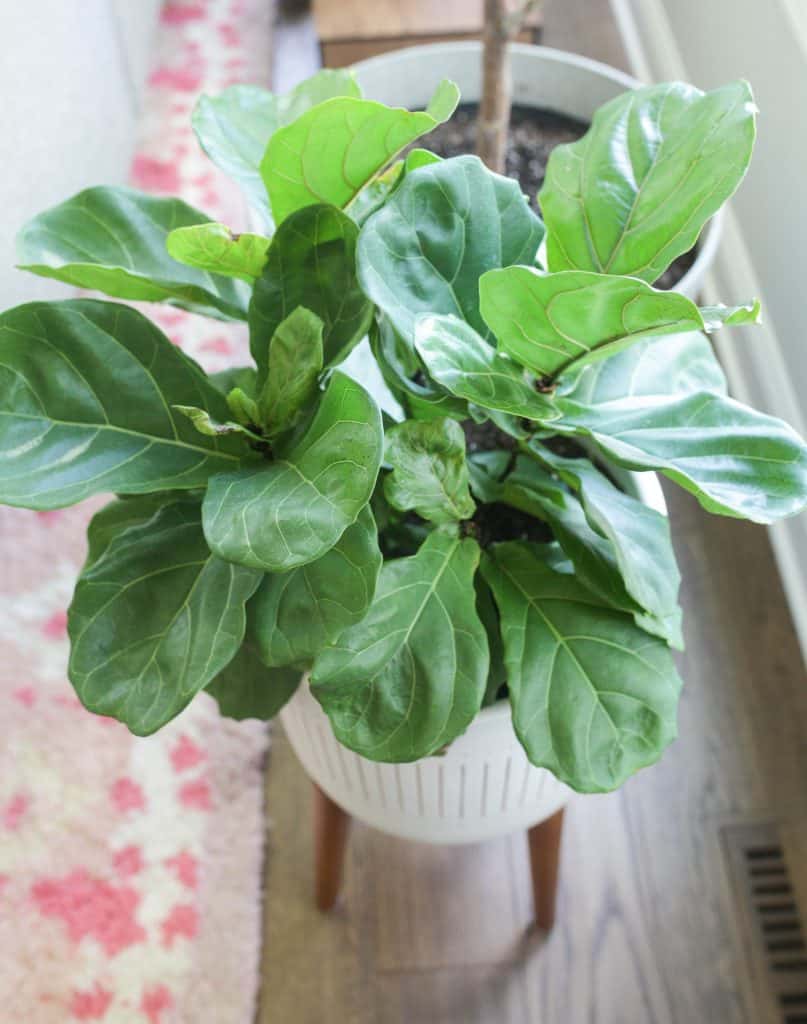
Water
You should water your Little Fiddle when the soil starts to become slightly dry on the top. Keep it lightly moist at all times, however, but do not overwater. This could result in leaf drop.
One sure sign that your plant needs water is if the leaves are droopy. Give it a good drink and they should perk up within 24 hours.
I know when to water my plant by using my finger! Stick your finger into the soil – if there’s moist soil and it sticks to your finger, don’t water it. If it’s dry soil and it doesn’t stick to your finger you can water it!
It’s best to have a pot with drainage holes so excess water can flow out of the pot instead of staying inside which can cause problems.
Light
Choose a spot with bright indirect light for your Little Fiddle. Your Bambino can tolerate some light shade and some direct sunlight in the morning or afternoon, but typically not harsh or midday sun.
I have mine in a west facing window and she is thriving with the afternoon sun! A north facing window probably won’t give you enough sunlight so keep that in mind.
Insufficient light can also trigger leaf drop. If this should happen, find a different location for your fiddle-leaf fig and it should recover quickly. If you have your plant in a spot that doesn’t get much light you could also try a grow light!
Also, it is a good idea to rotate your indoor plants frequently to ensure they gets even light on all sides of the plant.
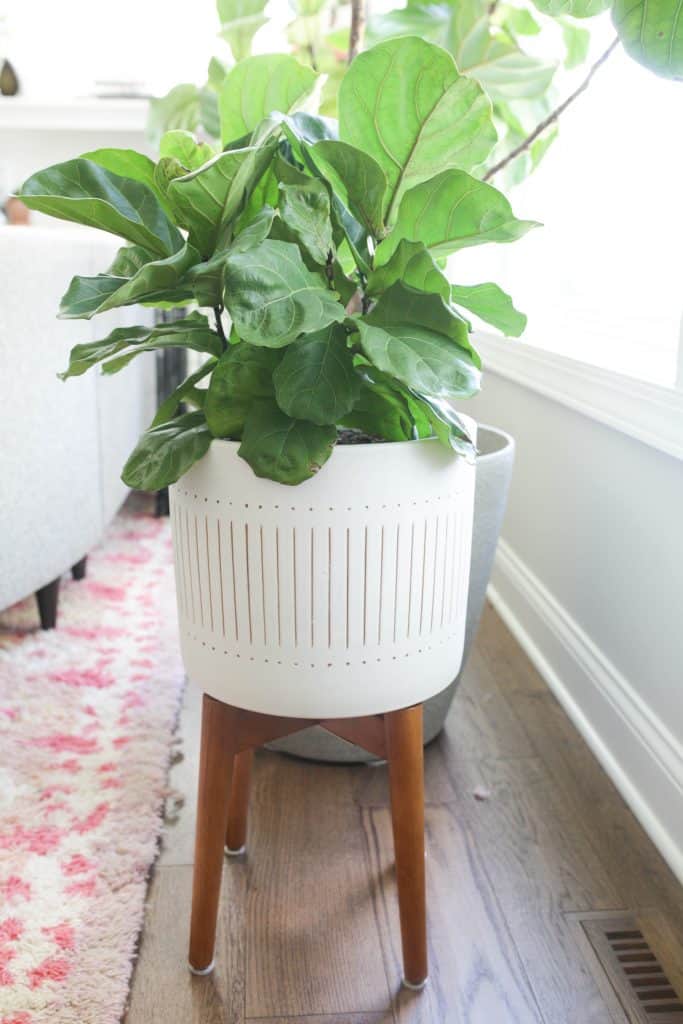
Dusting
Because these plants have such large thicker leaves, they need to be kept clean by dusting once in a while. The leaves breathe through photosynthesis and need to be clean to get oxygen.
You can either use a soft cloth or a soft brush to clean the leaves. They will thank you by growing better!
Soil
There are typically no special requirements for your Little Fiddle. Regular potting soil can be used. Be sure to keep the soil from compacting by aerating it once in a while and this will help the roots keep from rotting.
Fertilizing
Using a weak liquid fertilizer once or twice a month during the growing season should be sufficient for your Little Fiddle. You won’t need to fertilize it otherwise.
Check out some of our favorite fiddle leaf fertilizer here!
Temperature and Humidity
Bambino Fiddle Leaf Fig trees are tropical plants, so they love warmer temperatures and high humidity. Temps between 60 and 85 degrees F are best. Higher humidity is also best if you live in a drier climate.
Use a mister to mist your plants and that will definitely make them happy! Keep your live plants away from any drafty areas as this will dry out the leaves. Fluctuations in temperature may also lead to leaf drop, so try to avoid this.
Pests and Diseases
The Little Fiddle can be affected by spider mites, thrips, scale and mealybugs. Watching your plant on a regular basis and not overwatering go a long way to avoid these types of pests.
If you do happen to see them, wash them off under regular tap water. Then treat them (according to package directions) with either neem oil or antibacterial soap. A healthy plant is one that will usually not need to be treated for pests and/or diseases, but when this happens, treating it quickly is the best thing to do.
Air Purification
These sweet little plants are great to clean the air of unwanted pollutants such as carbon monoxide and benzene! Spread a few around your home or office to help keep the air clean!
Pruning
Pruning is best done during the spring and summer months when your ficus lyrata plants are in its growing cycle. Doing this during the winter months can stress the plant and it may start losing leaves.
You should also remember that the sap from the leaves is toxic and can harm your skin. Use gloves to trim or prune the leaves. This will keep you from skin irritation.
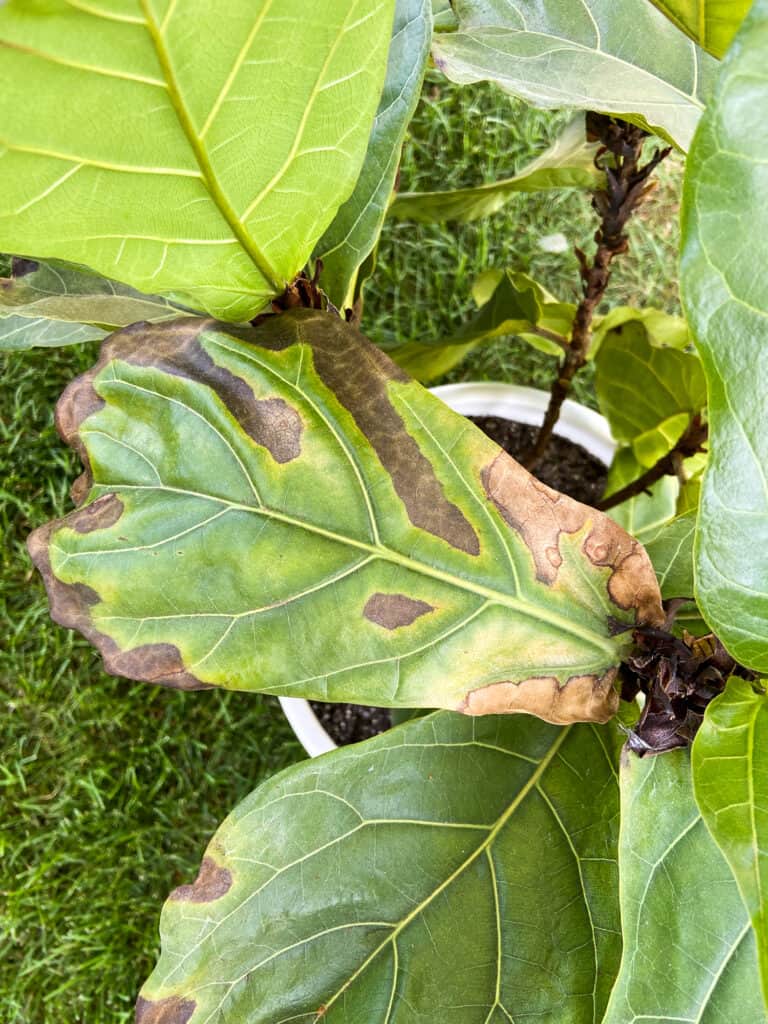
Also, it would help to lay some newspaper under your plant before you prune it so that the sap does not fall onto the floor, especially if you are going to be doing this indoors. The sap could stain or harm the finish of your floor or carpet.
Whenever you see yellow or brown leaves, be sure to remove them. Dead leaves do not promote good growth. A healthy plant is a happy plant! If you see light green leaves, leave them alone! New baby leaves start out light green and turn into darker green leaves as they mature.
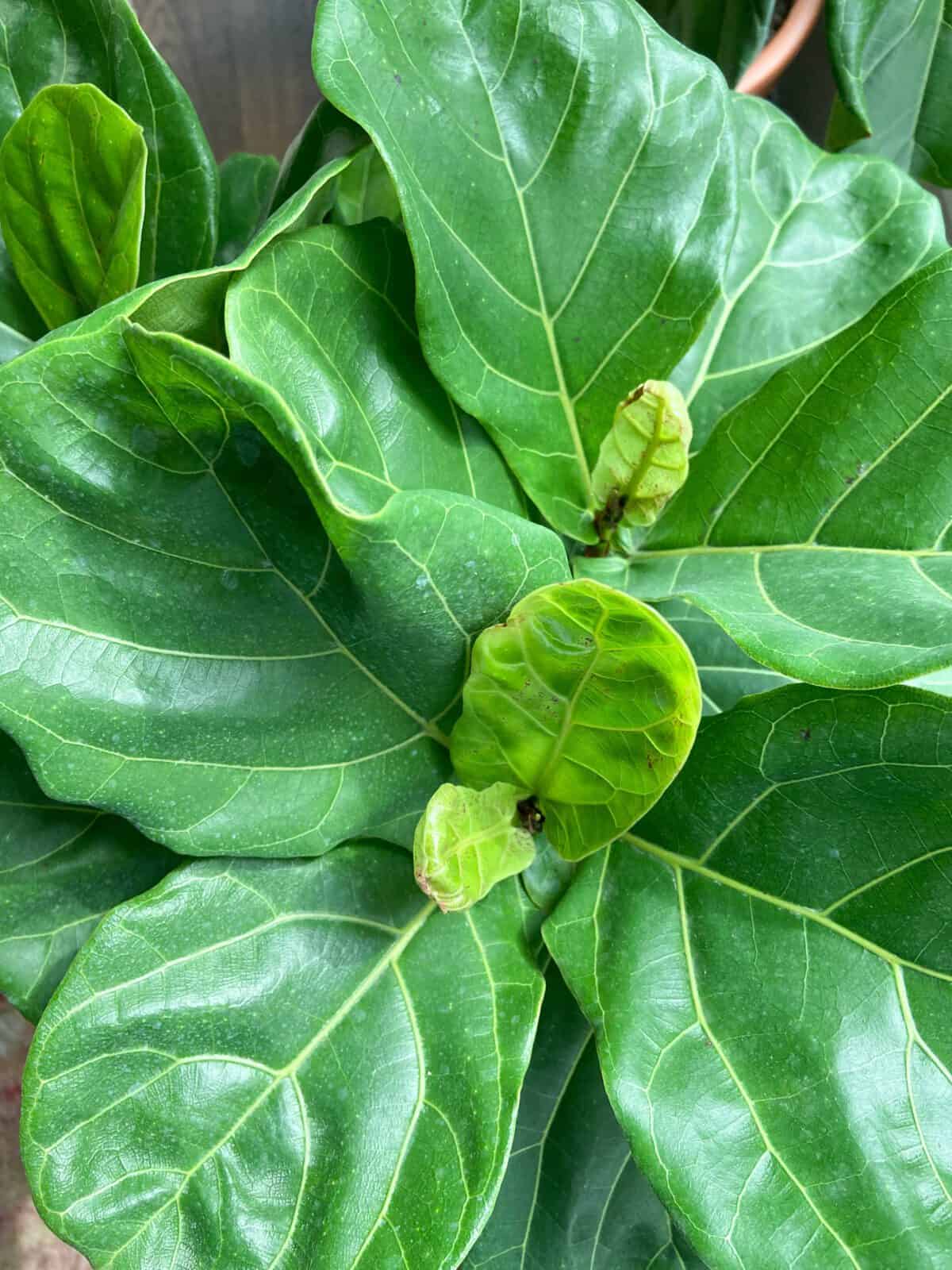
When you remove leaves from your plant, this will also promote better airflow, which will result in better overall growth for your plant. This will also help to avoid having any issues with pests and diseases.
Repotting
When it comes to repotting, be sure to use fresh regular potting soil that has good drainage. Choose a pot that is one to two inches larger than the previous pot.
Loosen the roots when you repot so that they can breathe and be ready to grow in the new dirt. Be sure to check for any signs of root rot. If you find any, be sure to cut it away until you see healthy roots. Never repot a plant with disease or rot!
Propagation
There are a lot of differing thoughts when it comes to propagating Fiddle Leaf figs. Some people like to propagate directly into soil and others prefer to allow them to root in water. There is also the school of thought that air layering is the way to go.
This is going to ultimately be up to you how you decide to propagate your own plant. It will also depend on which method ends up working best for you.
If you decide to propagate your plant directly into soil, you will need to cut a stem from your plant that has two to three nodes. Dip the cut end into rooting hormone powder and place it directly into a pot with a good, well draining potting soil mix.
You will need to wait a few weeks then tug at the cutting to see if it pulls back and that the root system has taken hold in the soil. Other signs it has taken hold will be that it may even start showing new leaves.
Another method of propagating is to take a two to three node stem and place it in water. This will take a longer time to develop roots. It may take up to two months to develop roots, but it could be a shorter amount of time.
You will have to keep watching your cutting to determine when it has enough roots (usually at least a one inch growth) to plant it into soil. Once you have enough roots, you can also dip these new roots into rooting hormone and place it into a well draining potting mix.
Air layering is a whole different method of growing new roots and propagation. There are multiple YouTube videos online to show how to do this if you are interested in this method, which is a bit more involved than the other two methods.
Where to Buy
Common Problems
These plants are known to be creatures of habit. They like to be where they like to be! That being said, if you decide to move your plant, it is okay to let it adapt to the new light conditions over time.
They are known to be finicky and stubborn, but it is very rewarding if you take time to care for them properly! They simply do not like change, but are relatively easy to care for.
If you find brown spots on your plant head here where I go through all of the reasons why you’re getting brown spots on your fiddle.
FAQs
The two most common causes of yellowing leaves are overwatering and improper light conditions. If you don’t overwater and give your plant sufficient light, you should not have any more problems with yellow leaves!
Bambinos only grow about three feet tall. The larger fiddle leaf fig will grow as tall as 12 feet when grown indoors!
If you see the roots coming through the holes in the bottom of the pot, it is time to repot the plant. Or if when you pull the plant from the pot and the roots are in a dense circle, then it is time to repot it. Repot your plant in a new pot that is one to two inches larger than the previous one.
In Conclusion
Sometimes a finicky plant can be one you want to steer away from, but this Little Fiddle is not one of those. It’s one of the best houseplants for a bright spot in your home.
It can be a delight to have in your home and will be an ideal house plant to any room that has sufficient light and proper temperature. Give it great care and you’ll have a beautiful plant for years to come!
Check out some other fiddle fun here!
Want other types of ficus plants? Check out how to grow a Rubber Tree here or my new favorite pink plant the Ruby Rubber Tree!
